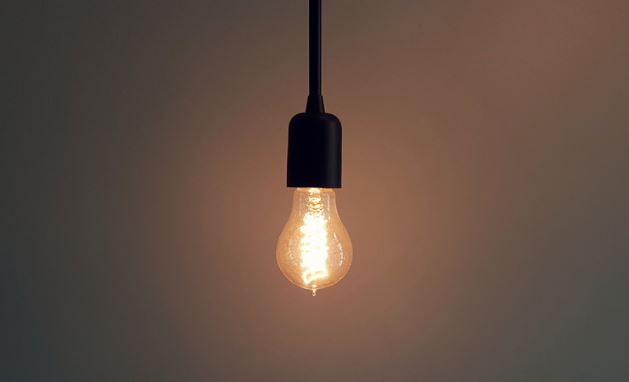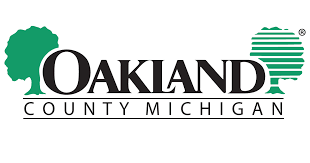Weekly Fishing Report – Aug. 26, 2020
|
||||||||||
Weekly Fishing Report – Aug. 26, 2020 |
||||||||||
|
||||||||||
| DNR COVID-19 RESPONSE: For details on affected DNR facilities and services, visit this webpage. Follow state actions and guidelines at Michigan.gov/Coronavirus. |
|
||||||||||
Weekly Fishing Report – Aug. 26, 2020 |
||||||||||
|
||||||||||
| DNR COVID-19 RESPONSE: For details on affected DNR facilities and services, visit this webpage. Follow state actions and guidelines at Michigan.gov/Coronavirus. |

FOR IMMEDIATE RELEASE
August 21, 2020
Media Contact: Press@Michigan.gov
FEMA Approves Whitmer Administration’s Application for Federal Funding to Provide an Additional $300 Per Week to Unemployed Michiganders
Governor again calls on the president, Congress to work together on a longer-term recovery package to bolster unemployment benefits
LANSING, Mich. — Today, the United States Federal Emergency Management Administration (FEMA) approved the Michigan Unemployment Insurance Agency’s application for funding that would provide an additional $300 per week payment to Michiganders receiving unemployment benefits.
“This is good news for the thousands of Michiganders who are still without work as a result of the COVID-19 pandemic, but it’s still a short term band aid that falls short of what’s needed,” said Governor Whitmer. “We need the president, Mitch McConnell, and Congress to put partisanship aside and pass a bipartisan recovery package that will help us save lives and get people back on their feet. Michigan families, frontline workers, and small business owners are counting on the federal government to do the right thing and work together on their behalf.”
The UIA estimates that under the program, about 910,000 Michiganders would receive at least $300 per week in supplemental benefits. The program allows for existing Unemployment Trust Fund payments delivered by Michigan’s Unemployment Insurance Agency to count as 25% matching funds required for participation. Eligible claimants will be paid benefits retroactive to August 1. It is unclear at this time how long funding for the program will last.
“This additional $300 a week will provide some much needed support to those who are still struggling to make ends meet during this time of extreme need,” said Steve Gray, Director of the Unemployment Insurance Agency. “Our goal now is to work as quickly as possible to implement this new program to get people the benefits they need.”
At this time, claimants do not have to take any action to receive the additional benefit amount provided by the program. The additional benefits will be added automatically for all claimants who are eligible to receive at least $100 in weekly unemployment benefit payments. This includes claimants receiving any type of regular unemployment insurance benefits as well as those receiving Pandemic Unemployment Assistance (PUA) benefits.

FOR IMMEDIATE RELEASE August 26, 2020
Media Contact: Matt Helms 517-284-8300
Customer Assistance: 800-292-9555
Michigan.gov/MPSC
Twitter
The Michigan Public Service Commission (MPSC) and the Michigan Department of Health and Human Services (MDHHS) are urging customers to be proactive in seeking help if they find themselves unable to pay their energy bills and to not wait to receive a shut off notice or are almost out of propane or fuel oil.
As the COVID-19 pandemic and economic downturn continue and as the winter heating season approaches, many Michiganders may find themselves needing assistance for the first time. If you’ve recently become unemployed or have lost income due to the pandemic, you should first contact your energy provider or propane supplier to ask what options may be available to you.
Assistance is also available through the State Emergency Relief (SER) program and the Michigan Energy Assistance Program (MEAP). If you need immediate assistance in getting a delivery for propane for fuel oil, help keeping your energy services on or restoring services that have been disconnected, the quickest way is to apply for SER is online through MI Bridges at www.michigan.gov/mibridges. If you need help applying or navigating the application process, call 211 and ask for a MEAP grantee near you for help.
If you have already received SER, you still may be eligible for additional assistance because the caps on assistance have increased. Households who qualify for SER also qualify for assistance through MEAP, which provides supplemental bill payment assistance and energy self-sufficiency services. You can connect with a MEAP provider during your MI Bridges SER application process, by calling 211 or going to mi211.org.
“There are still MEAP funds available to assist customers in need of energy assistance and self-sufficiency services” said MPSC Chair Dan Scripps. “Also, the amount of funding available per person was increased from $2,000 to $3,000, but goes back down after Sept. 30, so it’s important that customers seek assistance right away if they have a past due account or are struggling to pay their energy bills.”
Additional energy assistance is also available through the Home Heating Credit. The Michigan Department of Treasury determines eligibility and makes payments for this program. Application forms are available from the Department of Treasury, local Department of Health & Human Services offices, and anywhere Michigan tax forms are available. The application period is January to September 30. You do not need to file a state income tax return, you may apply for the Home Heating Credit only. Eligibility is based on income, number of exemptions and household heating costs. More information is available at www.michigan.gov/treasury.
“These are unprecedented times and many Michiganders find themselves in circumstances they’ve not faced before. Help is available. Those who have lost jobs or income may find they are now eligible for assistance they may not have previously needed,” said MDHHS Director Robert Gordon. “Due to recent policy changes we are now processing emergency requests faster than ever, and it is easier to access benefits. Don’t delay in seeking the help you need.”
In response to COVID-19, the following changes to SER policy have been put in place:
For information about the MPSC, visit www.Michigan.gov/MPSC, sign up for one of its listservs, or follow the Commission on Twitter.

Press Release FOR IMMEDIATE RELEASE: Aug. 27, 2020 MDHHS CONTACT: Bob Wheaton, 517-241-2112, wheatonb@ LEO CONTACT: Elyse Walter, 517-449-9731, waltere@ Michigan low-income college students enrolled in career and technical education programs can apply for food assistance Benefits available to Perkins program enrollees for first time LANSING, Mich. – Michigan students in college Career and Technical Education programs returning to classes this fall are now eligible to receive food assistance if they meet other eligibility requirements. The Michigan departments of Labor and Economic Opportunity (LEO) and Health and Human Services (MDHHS) are encouraging students to apply for food assistance benefits online at Michigan.gov/MIBridges. LEO and MDHHS sought and received federal approval for the new initiative – effective May 2020 – to address rising food insecurity among students that has been made worse by COVID-19. Close to 16,000 low-income college students in Michigan who are enrolled in Career and Technical Education (CTE) programs are eligible to receive food assistance benefits through the federal Supplemental Nutrition Assistance Program (SNAP). “As Michigan CTE students are preparing for high-demand, critical job openings, they shouldn’t have to worry about how they’ll get their next meal,” said LEO Director Jeff Donofrio. “These SNAP benefits will help them focus on their educational needs and prepare for a successful future.” Previously, college students enrolled in qualifying CTE programs who attended school at least half-time could not qualify for SNAP benefits, even if they met income eligibility requirements, unless they fell into certain categories such as working at least 20 hours per week, caring for a child, or being unable to work. “MDHHS was already working to help more people put nutritious food on the table prior to the pandemic,” said MDHHS Director Robert Gordon. “COVID-19 made this priority even more critical. Due to the pandemic, many students lost their jobs. As a result, they lost their SNAP eligibility through no fault of their own.” College students in Michigan are now eligible for SNAP if they meet income and other program requirements and are enrolled at least half-time in an occupational program that leads to employment under the Strengthening Career and Technical Education for the Twenty-First Century Act of 2018 known as Perkins V. “Expanding access to SNAP is a huge benefit to students who are juggling their courses along with work, family and other obligations,” said Mike Hansen, president of the Michigan Community College Association. “We’re grateful that MDHHS expanded access and is making it so much easier to apply for benefits on MI Bridges.” The Perkins Postsecondary Career and Technical Education Program provides funding to 28 community colleges, three public universities and one tribal college to support pathways to high-wage, high-skilled and in-demand careers that require less than a bachelor’s degree. Those institutions offer more than 3,600 qualifying programs, offering a certificate or associates degree to careers in fields such as information technology, health care, hospitality and manufacturing. There are nearly 90,000 students enrolled in these programs in Michigan. Some of those students may already be receiving food assistance benefits, while others will become eligible for this new opportunity. For anyone currently enrolled in a Perkins program with an existing food assistance case who has experienced a loss of income, their MDHHS caseworker will determine Perkins program status to ensure the benefits are correct. Any Perkins student who wants to apply for food assistance should provide documentation from their school that outlines their major and program or course of study to assist in determining their eligibility for SNAP. Examples could include a proof of registration and a document showing their major, program, or course of study. A caseworker will use that information to determine eligibility. Students interested in applying for food assistance can go to Michigan.gov/MIBridges. Verification of enrollment in a Perkins program must be provided by the student or may be requested from the postsecondary institution. Learn more about the Perkins Postsecondary CTE Program at Michigan.gov/LEO-Perkins. |

Pontiac, Michigan – Oakland County will expand its free drive-thru COVID-19 testing to include school-age children beginning August 31. Children must be from 4- to 17-years-old, have symptoms of coronavirus, and be residents of or attend school in Oakland County. Testing is available weekdays by appointment only.
“As the school year begins, we are here to support schools, teachers and families, learning in-person or remotely,” Oakland County Executive David Coulter said. “The availability of testing for symptomatic children is important to isolating and controlling the spread of this disease in our schools and community.”
Parents can begin scheduling an appointment for their symptomatic children beginning Thursday August 27, 2020 through the Oakland County Health Division’s Nurse on Call hotline at 800-848-5533. No doctor’s note or prescription is needed plus there is no fee.
“COVID-19 symptoms are milder in children than in adults, and some infected children may not have obvious signs of being sick,” Oakland County Medical Director Dr. Russell Faust said. “It is very important that parents and guardians trust their instincts and be overly cautious of all health and behavior changes, and keep their child home from school and contact their pediatrician, family care practitioner or our Nurse on Call if their child is even mildly ill.”
The Health Division encourages all residents to monitor their health symptoms carefully, including daily temperature checks, and to stay home when feeling mildly sick, or if feeling the onset of symptoms.
The Health Division offers drive-thru testing on Mondays and Wednesdays at the South Oakland Health Center at 27725 Greenfield Road in Southfield; Tuesdays and Thursdays at the Oakland County government campus, 1200 N. Telegraph Road in Pontiac; and on Fridays at Oakland Community College, Orchard Ridge Campus at 28696 Oakland, Farmington Hills.
General COVID-19 resources can be found on the Health Division’s website at www.oakgov.com/covid or by contacting Nurse on Call at 800-848-5533 or noc@oakgov.com. Nurse on Call is available 8:00 a.m. to 6:00 p.m., Monday through Friday, and 9:00 a.m. to 12:00 p.m. Saturday. For up-to-date public health information, follow @publichealthOC on Facebook and Twitter.
For media inquiries only please contact Bill Mullan, Oakland County media and communications officer, at 248-858-1048.